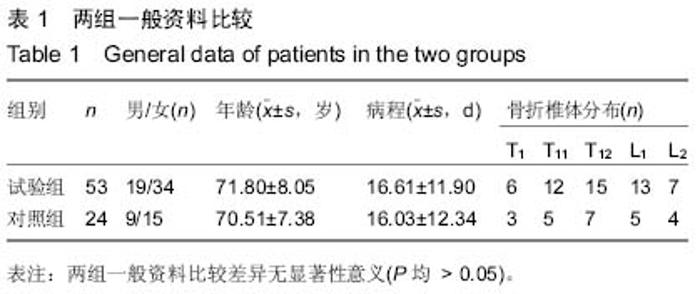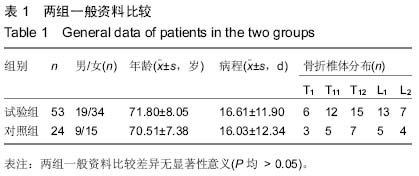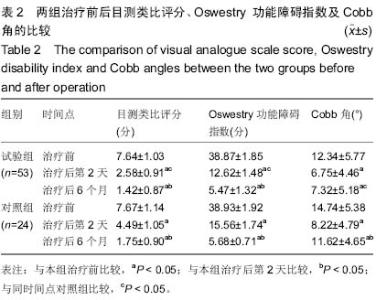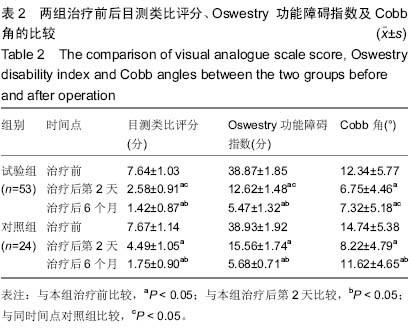| [1] 陈黔,王大寿,潘奇,等.高黏度骨水泥在经皮椎体成形术中的临床评价[J].重庆医学,2014,43(12):1457-1459.
[2] 李广军,赵亮,邱耿韬,等.接种密度对磷酸钙骨水泥支架骨髓基质干细胞增殖和成骨分化的影响[J].中华创伤骨科杂志,2014, 16(6): 527-532.
[3] Chao KH,Lai YS,Chen WC,et al.Biomechanical analysis of different types of pedicle screw augmentation: a cadaveric and synthetic bone sample study of instrumented vertebral specimens. Med Eng Phys.2013;35(10):1506-1512.
[4] 戴红莲,胡付俭.可注射镁基磷酸钙骨水泥的研究[J].无机材料学报, 2014,29(9):991-996.
[5] 徐永清,朱跃良,范新,宇等.万古霉素硫酸钙或万古霉素骨水泥治疗胫骨开放性骨折术后并发骨髓炎[J].中华创伤骨科杂志,2014, 16(11):925-929.
[6] Gonçalves G,Cruz SMA,Ramalho A,et al.Graphene oxide versus functionalized carbon nanotubes as a reinforcing agent in a PMMA/HA bone cement.Nanoscale. 2012;4(9): 2937-2945.
[7] 张亚楠,胡雁,杨洪.含硅磷酸钙骨水泥的理化性质及体外细胞毒性[J].分子科学学报:中英文版,2014,30(5):376-382.
[8] Zhang HY,Blunt LA,Jiang XQ,et al.The influence of bone cement type on production of fretting wear on the femoral stem surface: A preliminary study.Clin Biomech (Bristol, Avon).2012;27(7): 666-672.
[9] 李智斐,钟远鸣,刘尚,等.丙烯酸树脂骨水泥椎体成形治疗Kümmell病早期椎体后凸角的变化[J].中国组织工程研究,2012, 29(47): 8755-8759.
[10] 钱明,潘俊,孟斌,等.聚甲基丙烯酸甲酯骨水泥与Cortoss骨水泥生物力学性能及聚合温度比较[J].中国组织工程研究,2012, 16(16): 2935-2938.
[11] Klijn RJ,van den Beucken JP,Félix Lanao RP,et al.Three different strategies to obtain porous calcium phosphate cements: comparison of performance in a rat skull bone augmentation model.Tissue Eng Part A.2012;18(11-12): 1171-1182.
[12] 彭湘涛,刘训伟,李敏,等.可降解高分子网状球囊及磷酸钙骨水泥椎体填充后的力学变化[J].中国组织工程研究,2013,19(51): 8795-8800.
[13] 王根林,陈广东,朱雪松,等.丝素蛋白/双相磷酸钙/半水硫酸钙/重组人骨形态发生蛋白-2骨水泥的制备及修复椎体骨缺损的实验研究[J].中华创伤骨科杂志,2015,17(1):82-86.
[14] Chen W,Zhou H,Weir MD,et al.Human embryonic stem cell-derived mesenchymal stem cell seeding on calcium phosphate cement-chitosan-RGD scaffold for bone repair.Tissue Eng Part A.2013;19(7-8):915-927.
[15] 周英杰,赵刚,李森,等.经皮聚甲基丙烯酸甲酯骨水泥椎体成形结合手法牵引复位治疗骨质疏松性胸腰椎压缩骨折[J].中国组织工程研究,2012,16(21):3823-3827.
[16] 谭权昌,吴子祥,雷伟,等.改善聚甲基丙烯酸甲酯骨水泥体积收缩的研究进展[J].脊柱外科杂志,2014,12(2):116-119.
[17] 赵斌,赵轶波,赵晓峰,等.不同填充材料在修复羊椎体内骨缺损的吸收与成骨特性[J].中华实验外科杂志,2013,30(12): 2655-2657.
[18] Nieuwenhuijse MJ,Van Erkel AR,Dijkstra PDS.Cement leakage in percutaneous vertebroplasty for osteoporotic vertebral compression fractures: identification of risk factors. Spine J.2011;11(9):839-848.
[19] Marcia S,Boi C,Dragani M,et al.Effectiveness of a bone substitute (CERAMENT™) as an alternative to PMMA in percutaneous vertebroplasty: 1-year follow-up on clinical outcome. Eur Spine J.2012;21(1):112-118.
[20] 王丰斌.经皮椎体形成术(PVP)与保守治疗方法在治疗骨质疏松性椎体压缩骨折的疗效比较[J].航空航天医学杂志,2013,24(10): 1205-1207.
[21] 何万庆,关永林,柳永明,等.“蛋壳”技术在经皮球囊扩张后凸成形术治疗严重骨质疏松性椎体压缩骨折中的应用[J].国际外科学杂志,2014,41(11):743-747.
[22] Farrokhi MR,Alibai E,Maghami Z.Randomized controlled trial of percutaneous vertebroplasty versus optimal medical management for the relief of pain and disability in acute osteoporotic vertebral compression fractures: Clinical article.J Neurosurg Spine.2011;14(5):561-569.
[23] 陈绍辉,孙凯,陈演,等.切开减压复位或经皮复位椎体后凸成形术治疗老年骨质疏松性胸腰椎骨折椎体后壁破裂的临床疗效[J].中国老年学杂志,2014,23(14):4052-4053.
[24] 张功林,刘晓红.经皮椎体前凸成形术治疗骨质疏松性椎体压缩骨折[J].国际骨科学杂志,2012,33(2):109-110.
[25] Tomé-Bermejo F,Piñera AR,Duran-Álvarez C,et al. Identification of risk factors for the occurrence of cement leakage during percutaneous vertebroplasty for painful osteoporotic or malignant vertebral fracture.Spine (Phila Pa 1976). 2014;39(11):E693-E700.
[26] Nieuwenhuijse MJ,Van Erkel AR,Dijkstra PD.Cement leakage in percutaneous vertebroplasty for osteoporotic vertebral compression fractures:identification of risk factors.Spine J. 2011;11(9):839-848.
[27] 赵伟华,徐又佳.球囊扩张椎体后凸形成术治疗骨质疏松性椎体骨折[J].实用临床医药杂志,2012,16(3):99-100.
[28] 钱利海,梁清宇,樊新甫,等.PKP治疗骨质疏松性椎体压缩性骨折[J].实用骨科杂志,2013,19(10):912-915.
[29] 赵敏,周江军,华余强,等.PKP联合PVP治疗多节段骨质疏松性椎体压缩性骨折的疗效评价[J].中国骨与关节杂志,2012,1(6): 578-581.
[30] 史光华,李鹏翠,卫小春,等.骨质疏松椎体压缩骨折的治疗进展[J].中国骨伤,2013,26(10):878-882.
[31] 崔江朝,孙建民,崔新刚,等.骨质疏松压缩椎体骨折时的骨密度与病理对照[J].中国组织工程研究,2013,17(22):3991-3997.
[32] 张亮,高梁斌,李健,等.椎体成形术中椎体骨密度对骨水泥弥散体积的影响[J]. 中国脊柱脊髓杂志,2011,21(11):915-918.
[33] Eichler K,Zangos S,Mack MG,et al.Outcome of long-axis percutaneous sacroplasty for the treatment of sacral insufficiency fractures with a radiofrequency-induced, high-viscosity bone cement.Skeletal Radiol. 2014;43(4): 493-498.
[34] Chiu YC,Yang SC,Chen HS,et al.Clinical evaluation of repeat percutaneous vertebroplasty for symptomatic cemented vertebrae.J Spinal Disord Tech.2012;25(8):E245-E253.
[35] 江晓兵,莫凌,梁德,等.骨水泥在椎体骨折线内弥散情况对椎体成形术治疗效果的影响[J].中国脊柱脊髓杂志,2014,24(2): 144-149.
[36] Nieuwenhuijse MJ,van Rijswijk CSP,van Erkel AR,et al.The intravertebral cleft in painful long-standing osteoporotic vertebral compression fractures treated with percutaneous vertebroplasty: diagnostic assessment and clinical significance.Spine (Phila Pa 1976).2012;37(11):974-981.
[37] Itshayek E,Miller P,Barzilay Y,et al.Vertebral augmentation in the treatment of vertebral compression fractures: review and new insights from recent studies.J Clin Neurosci.2012;9(6): 786-791.
[38] 何卫斌,冉学军.经皮球囊扩张椎体后凸成形术治疗老年骨质疏松性胸、腰椎压缩性骨折61例疗效分析[J].重庆医学,2012, 41(15):1499-1500.
[39] 宋建治,肖少雄,徐礼森,等.PFNA、PFN与DHS内固定治疗老年骨质疏松性股骨粗隆间骨折疗效对比[J].中国现代手术学杂志, 2012,16(4):305-308.
[40] Dohm M,Black CM,Dacre A,et al.A randomized trial comparing balloon kyphoplasty and vertebroplasty for vertebral compression fractures due to osteoporosis.Am J Neuroradiol.2014;35(12):2227-2236. |



